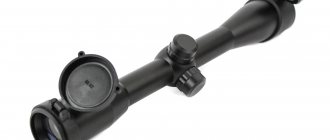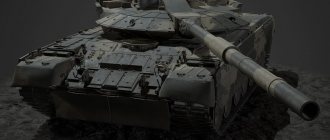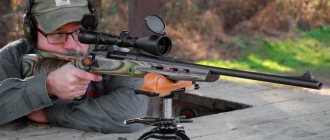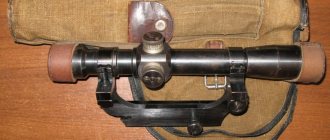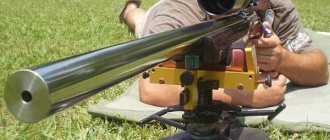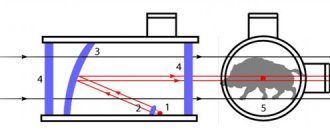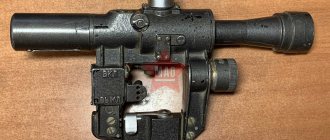Comparison of tactical and technical features of aircraft
The Su-35 is considered Russia's most formidable fighter. He made his first flight in 2008. The Russian Air Force added these aircraft to its fleet in 2012. By the end of 2022, the Ministry of Defense will have 50 such aircraft.
This aircraft has excellent technical characteristics and combat capabilities. However, it belongs only to the 4th generation of fighters, which significantly distinguishes it from the more modern American F-22, a fifth-generation fighter. So which one has the upper hand in air combat? Will the “American” be able to withstand the Su-35, what characteristics will allow it to win the battle?
Comparison of two military aircraft: 1. Highest speed in afterburner, non-stop flight distance, maximum altitude.
- Su-35: 2,410 km/h, 3,600,000 m, 20,000 m.
- F-22: 2,410 km/h, 3,220,000 m, 20,000 m.
2. Level of visibility for enemy radars.
- Su-35: Irbis radar, air target detection range - 90,000 m, OLS-35, has an infrared scanning system.
- F-22: APG-77 radar, air target detection range - 150,000 m, no infrared optics, no infrared detection system.
3. Combat equipment.
- Su-35: air-to-air missiles 6+8, combat load - 8 tons, close combat weapons - R 73-M (distance - 20,000 m), long-range weapons - R-27 (110,000 m), K- 77M (190,000 m), R-37 (300,000 m), air cannon - GSh-30-1 30 mm.
- F-22: 6+2 air-to-air missiles, combat load - 3.5 tons, close combat weapon - AIM-9 (18,000 m), long-range weapon - AIM-120 (180,000 m), air cannon - Vulcan M 612 A 20 mm.
From these characteristics it is clear that both military aircraft can fly at supersonic speeds, have modern radar, and can hit targets from any angle. However, the “American” is more likely to detect the enemy. He will see the Su-35 aircraft from 150,000 m, while the Russian fighter will notice the “American” only from a distance of 90,000 m. The F-22 will launch its missile much faster (AIM-120 - 180 km). True, the Su-35 is vulnerable when it does not see its enemy on the radar. With the support of its air defense, it has an advantage over the “American”.
The Russian military aircraft can attack air, sea, and ground targets. The fighter quickly bypasses and flies around any obstacles. Its combat equipment is unparalleled in terms of the number of warheads used in sea, air and ground combat. The external nodes can accommodate 14 missiles. Its warheads are placed on 8 wing hardpoints, as well as under the fuselage and under the engine nacelles.
The F-22 is the most classified aircraft. Perhaps some of its characteristics do not correspond to reality. This is the only aircraft that is not sold to other countries. The US Air Force has 180 of these fighters. They cost $140 million each (Russian ones cost $50 million each).
Su-35S - a universal predator hunter
The Russian Su-35S was originally designed as a hunter aircraft.
The entire concept of its creation - from the engine to the weapons systems - was developed to solve the main task: aggressive air combat, interception and destruction of enemy air attack weapons. Many Western experts point out that the Su-35S is more visible than the F-22 as its main drawback. At the same time, they diligently hush up the capabilities of our fighter as a combat unit.
Well, shouldn’t he sit in an ambush and shoot on the sly?! Reducing radar signature only slightly, by only 30%, reduces the maximum detection range of any "stealth" aircraft under ideal conditions. In real situations, this figure is even lower, since the radars of air defense and aviation systems “operate” on the aircraft.
Why does our plane need this? Its design already has a fairly low ESR, but the complex of on-board radio-electronic equipment (avionics) gives it a number of advantages that more than cover the “identified shortcoming”.
Firstly, this is its N035 Irbis radar, which, with a power of 1 kW, allows you to detect targets at a range of 300 km and carry out acquisition at a range of 250 km. The F-22 radar does the same thing, but with a power of 12 kW. In addition, as we found out, AWACS helps the Raptor fighter in long-range detection.
Secondly, the Su-35S has in its arsenal an onboard defense system - the Khibiny-10M electronic warfare system. It is guaranteed to detect the radiation of all radars on the battlefield and generates an algorithm to counter them in the form of jamming at the same frequencies. On the one hand, “Khibiny” affects the ability of AWACS to provide its aircraft with accurate coordinates about our aircraft (range, speed and angular position). On the other hand, the on-board defense system camouflages our aircraft from the radar of the enemy aircraft and prevents the missile seeker from capturing.
As a result, AWACS and F-22 will direct AIM-120 missiles to a phantom target, the location of which will be at a great distance from the Su-35S. But the Russian “Sushka” will be able to send them “goodies” in response in the form of RVV-DB, and will not miss the “address”. This mode of operation of the Khibiny-10M electronic warfare system is called deflection jamming. It also has other modes, but let them remain secret for now.
As a result, summing up the debate “Who is better: Su-35S or F-22?”, I will cite a well-known case from combat practice that happened on December 13, 2022 in the skies of Syria.
On that day, a pair of Su-25 attack aircraft at an altitude of 3,300 meters accompanied a convoy with humanitarian aid in the area of the city of Al-Mayadeen (the western bank of the Euphrates River). An uninvited “guest” - an F-22 fighter - flew to our planes from the eastern bank of the Euphrates. The American Raptor tried to prevent Russian attack aircraft from completing a combat mission.
Real assessment of the Su-35 vs F-22 Raptor battle
According to experts, the F-22 will avoid close combat in every possible way. After all, the concept of an “invisible” aircraft assumes exclusively long-range combat. There is a rule: whoever saw the enemy first was the first to send a missile. The Russian aircraft is considered a super-maneuverable fighter. After all, its engines have an all-angle deviating thrust vector. This happens due to the nozzles, which can rotate in a vertical as well as a horizontal plane. The F-22 Raptor can only deflect its thrust vector vertically. The Russian military aircraft was called a real UFO for its maneuverability.
At short distances, the Russian fighter has an advantage. Although, this is not very important during battle. American aircraft have very low visibility to their enemy's radar. They have very powerful radars and can see Russian flying military vessels faster, which is why they are more likely to fire their missiles at them.
However, Russian aircraft also use stealth technology. They are not that easy to spot. In addition, having discovered the Su-35, the “American” will completely give himself away. The Russian fighter will not have time to fire a response salvo, but it will be able to prepare for an anti-missile maneuver, given its super-maneuverability. In addition, he will alert his defense system. The American missile will not be able to hit the target due to radio interference with the seeker.
The American does not have an infrared target detection system. He cannot calmly scan his airspace and not detect himself in any way. The Russian fighter has such a system. True, its range is only 80 km. In a long-range battle, these fighters have almost equal chances. The decisive role is played by the maneuverability of the aircraft, the skill of the pilot, and weapons. Russian military aircraft have a better chance of winning. After all, their R-73M missiles can be launched in any flight mode and have the best combat capabilities.
Stealth
To make an aircraft stealthy, it requires many parallel edges to avoid reflecting radar waves back to the source, as well as the use of wave-absorbing material and paints to "absorb" radar waves that escape scattering by the edges, thereby preventing the enemy from tracking them. These are the main principles of stealth technology, but there are other methods of reducing visibility, one of them is to minimize the emissions from the aircraft's sensors, which means, for example, that the F-22 radar? The APG-77 uses only enough energy to track an enemy, meaning the Raptor can avoid detection by passive sensors. Another important ability is to prevent detection through communication systems, since it is always possible to trace the source of the signal, the aircraft becomes visible, this is the reason why the F-22 can only communicate with other Raptors, since other aircraft will emit unnecessary noticeable signals. It is also necessary to reduce the infrared radiation of the aircraft, since the latest IR scanners (like the Russian OLS-35) can track the aircraft not only through infrared radiation from the engine nozzles, but also from the systems and surfaces themselves. To reduce infrared emissions, the B-2 and F-22 nozzles dissipate the heat of the jet streams, and the surfaces with the main faces of the F-22, F-35 and B-2 are specially cooled and visibility in the infrared spectrum is significantly reduced. The F-22 has all these functions, the PAK-FA is more visible in the infrared range and loses in stealth systems.
As shown in the picture, the F-22 has many more parallel edges than the PAK-FA, especially on the rear fuselage of the PAK-FA, which is considered the most prominent part of the aircraft. In terms of stealth, the F-22 is ahead, since it is built according to all the rules of stealth, the engines are cooled, and the reflective surface is less than 0.0001 square meters, the PAK-FA is not as stealthy as the F-22, without reducing the IR signature, the reflective surface it has from 0.5 to 0.01 sq.m., and its radar absorption coating is not as steep as that of the Raptor. The PAK-FA's engine nozzles are open, unlike the F-22's, which significantly increases infrared signature. But there is one thing that the PAK-FA has, but the F-22 does not, “Plasma stealth” (https://www.cnews.ru/news/top/?2005/10/19/190317), Plasma, is said to be an effective method of reducing visibility by creating a cloud of plasma around the aircraft to reflect or absorb radar waves, but in any case, even with plasma stealth technologies, the PAK-FA is much more noticeable, and the plasma may also blind the PAK-FA, jamming its own radar and sensors. Moreover, there is a general question about the possibility of creating a plasma cloud and stable support for it; there is a theoretical possibility, but most likely there is no practical one.
The F-22 radar (AN/APG-77) includes from 2000 to 2200 receiving modules and its stealth AESA radar, capable of tracking a 1 square meter target at a distance of 240 km, has been recognized as the most advanced fighter radar. The PAK-FA radar has 1500 elements tracking a target of 2.5 square meters at a distance of 400 km. Also, the PAK-FA has a 360-degree radar coverage, thanks to two L-band radars (lambda?) on the wings and a small X-band radar on the tail. The Raptor, in principle, can have all-round visibility due to the analysis of signals from all systems, including passive radars, but it does not have all-round radar visibility. The only problem with the PAK-FA is that its radar does not have a “Low probability of signal interception” mode.
APG-77
- The most advanced radar for fighter aircraft
- Ability to detect enemy with low radar detection probability
- Ability to suppress and jam enemy electronics and avionics
How the Su-35 caught an F-22 in its sights
Experts are still trying to understand how the Su-35 got into the sight of the American “invisible” missile. The photo of the captured American fighter was taken in the Syrian sky in 2022. It is possible that US military aircraft lose their stealth characteristics under certain conditions. The “American” is invisible if he is at a great distance from his enemy, and the infrared detection systems are not directed at him.
When an enemy approaches, all stealth protection does not apply. The F-22 becomes visible. The fact that a Russian fighter was able to detect it and caught it in the sky over Syria on its radar is far from the only one. Even ordinary civilian search and tracking systems detected the US Air Force's "stealth stealth".
Will the Su-35 defeat the F-22 Raptor in an aerial duel?
Not really
The photo of the “American” in the sight of the Su-35 says that Russian radars are stronger than American ones. In addition, the electronic warfare of the Russians is more powerful than that of the Americans. This means that after both fighters detect each other, the F-22 will have a harder time taking aim. During this time, the Russian fighter will have time to catch the target and launch its missiles.
J-20 Black Eagle
Not only will the F-22 and PAK-FA dominate the skies of the future, there is still the Chinese J-20 catching up with them. It is not as maneuverable as the PAK-FA or F-22 due to its size and aerodynamics, but it has greater payload and range. It may not be as stealthy as the Raptor, but it is already stealthier than the PAK-FA, which is why the F-22 and PAK-FA have better speed and better avionics
After all this, it is clear that it is losing to these two fighters, but this does not matter, the J-20 is a heavily armed long-range interceptor, superior to the F-22's radar and its stealth will protect it from being detected and hit by long-range missiles, so the F-22 will not lose its advantage : “The first to see, the first to shoot, the first to kill.” The situation is different for the PAK-FA, as it is not as stealthy, so the J-20 will be able to track it and lock on to the target, but the PAK-FA will be able to dodge the missiles and counterattack with its P-77s, which will most likely hit the J-20
Or the extremely maneuverable PAK-FA will outperform the J-20 in close combat. In conclusion, the J-20 is quite a dangerous opponent, but not superior.
“The US Navy's F/A-18E/F Super Hornet, superior in every way, would be ineffective against the J-20, so it's against the F-22A Raptor. All variants of the F-35 will also be completely surpassed, given that this abandoned project is progressing in all types of production.
All US Air Force, Navy and all associated fighter aircraft are outmatched in the same vein, and are absolutely useless against a system of this class."
Here's what Ausapower says about the F-35 and F/A-18E/F fighters, recording them as completely ineffective against the Chinese J-20 fighters.

